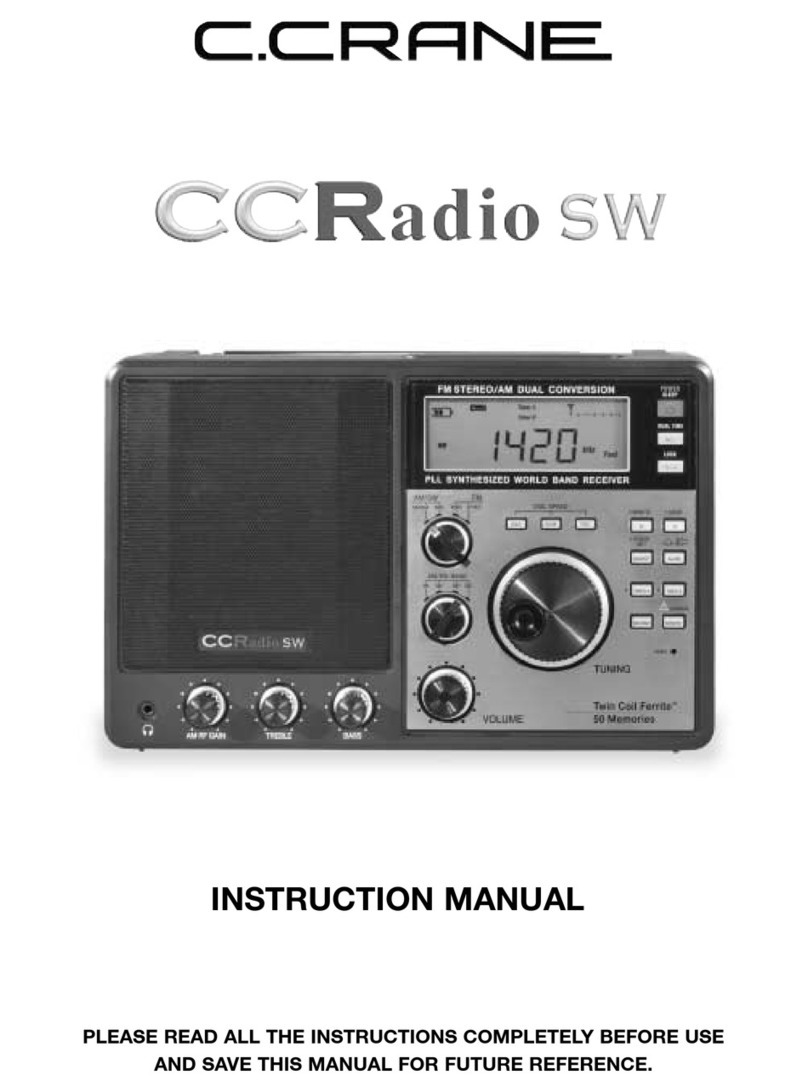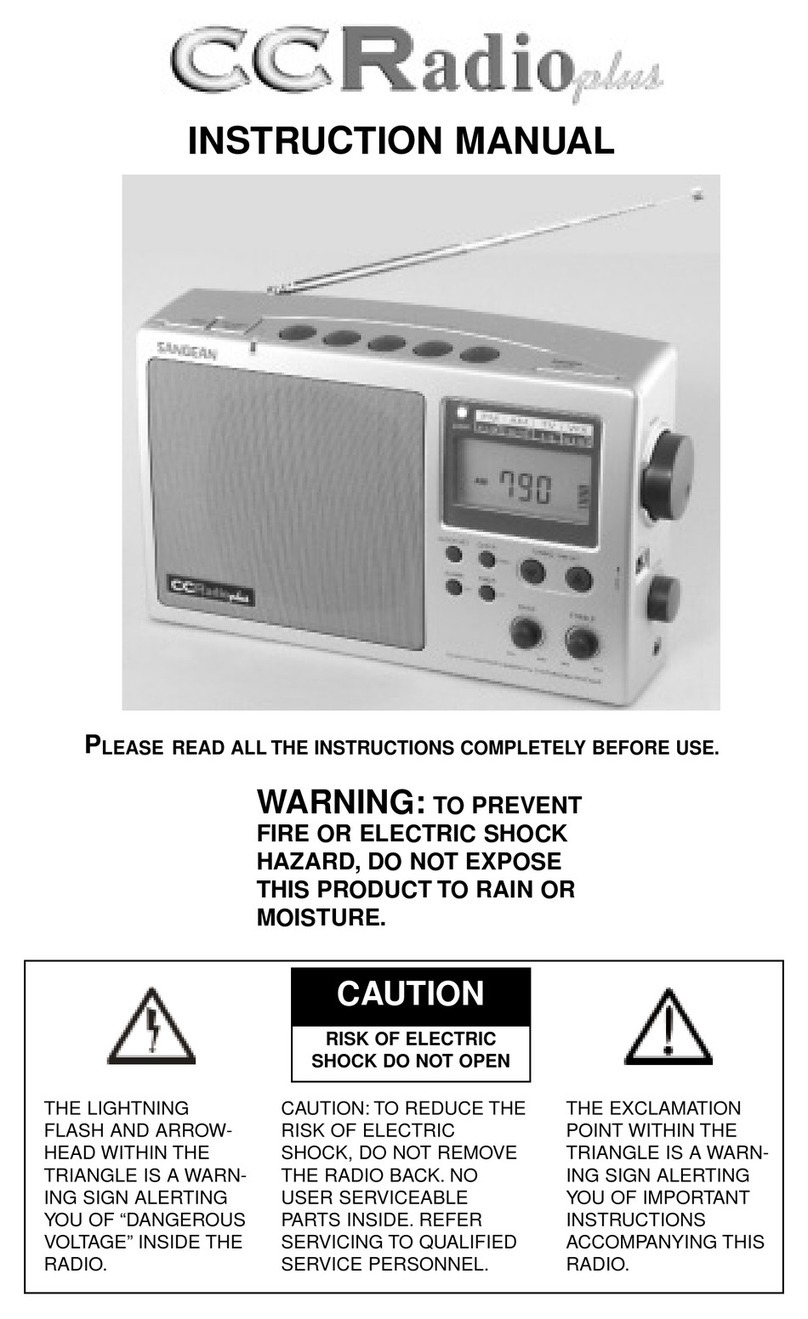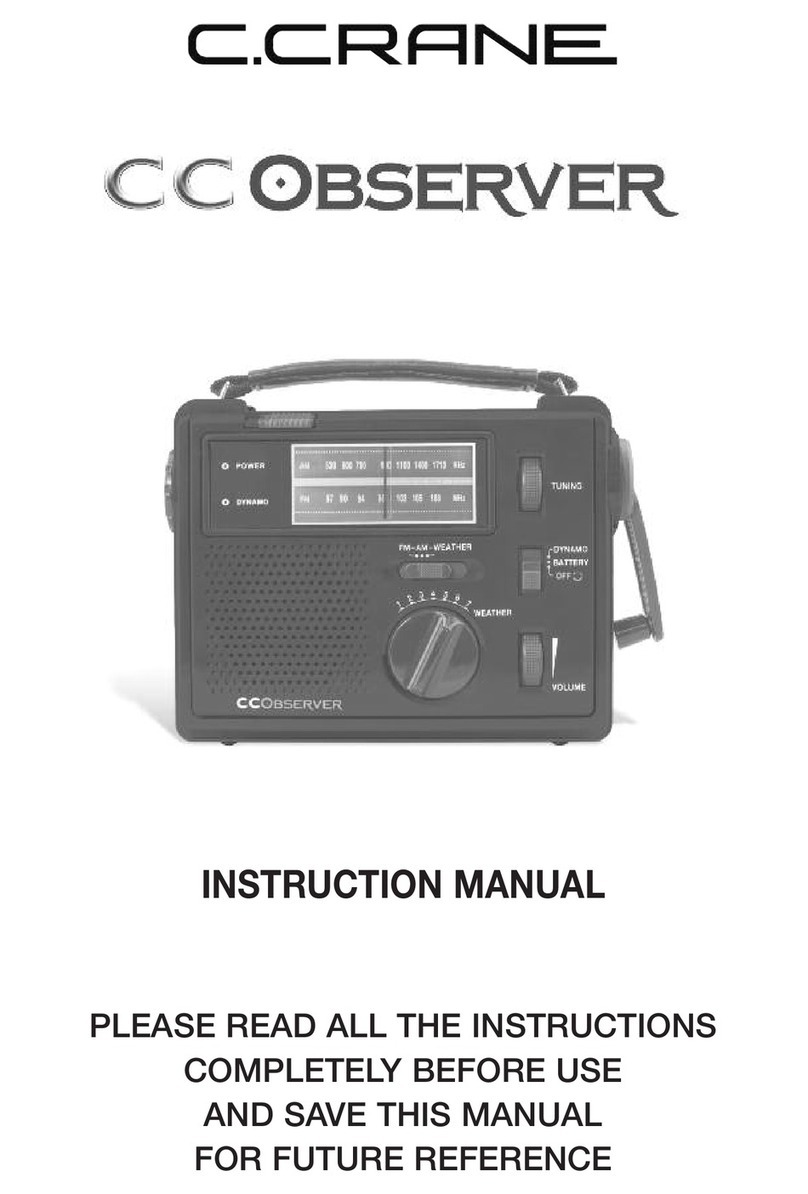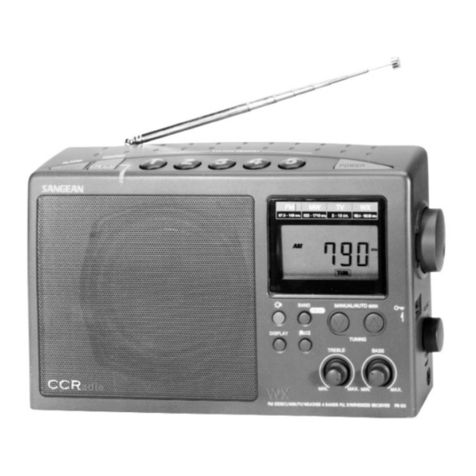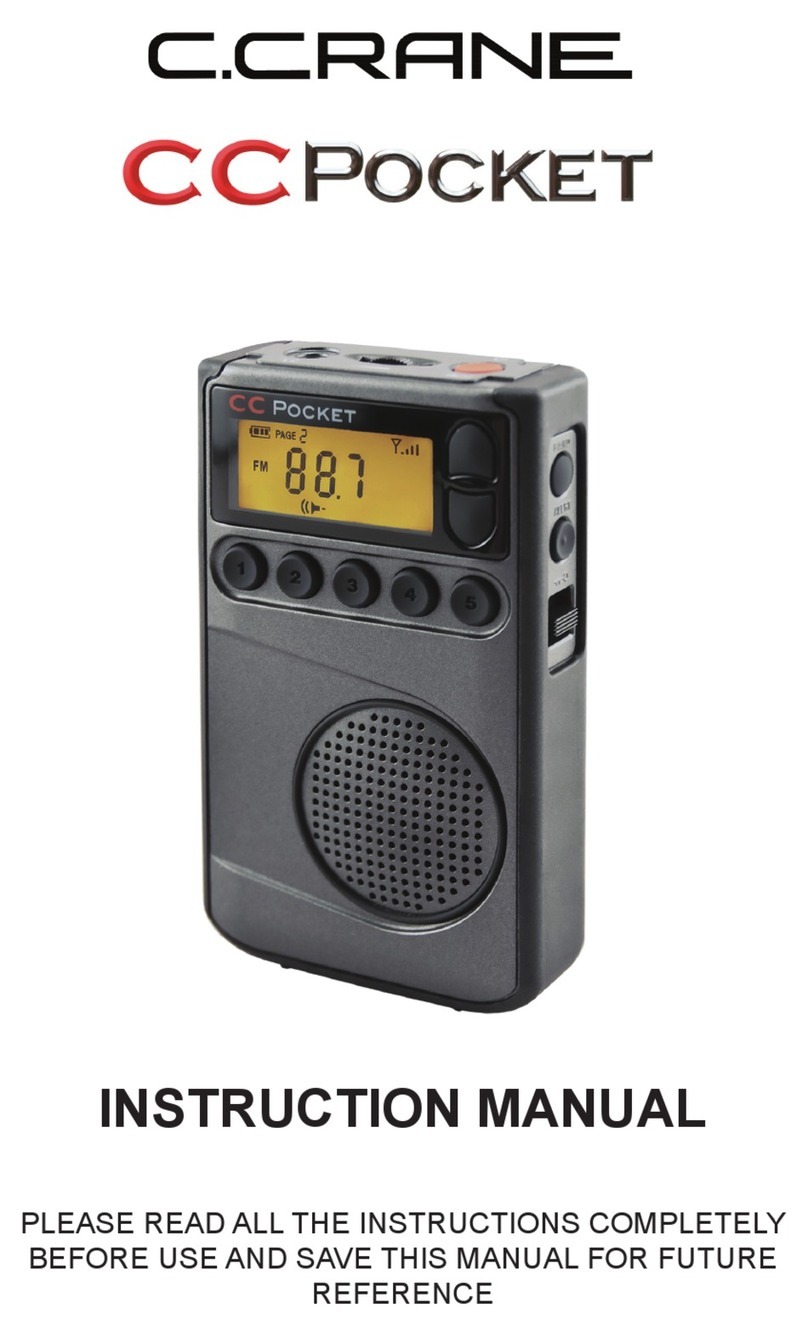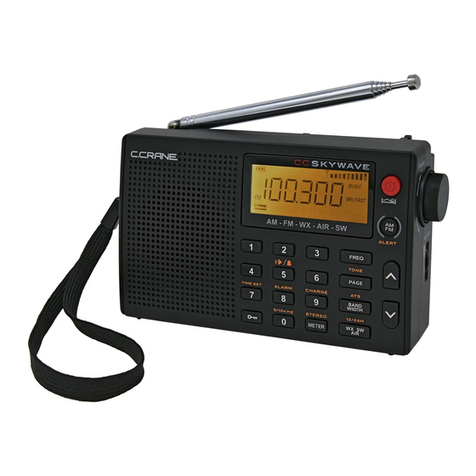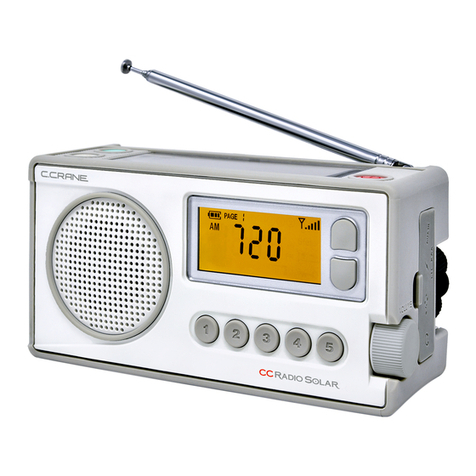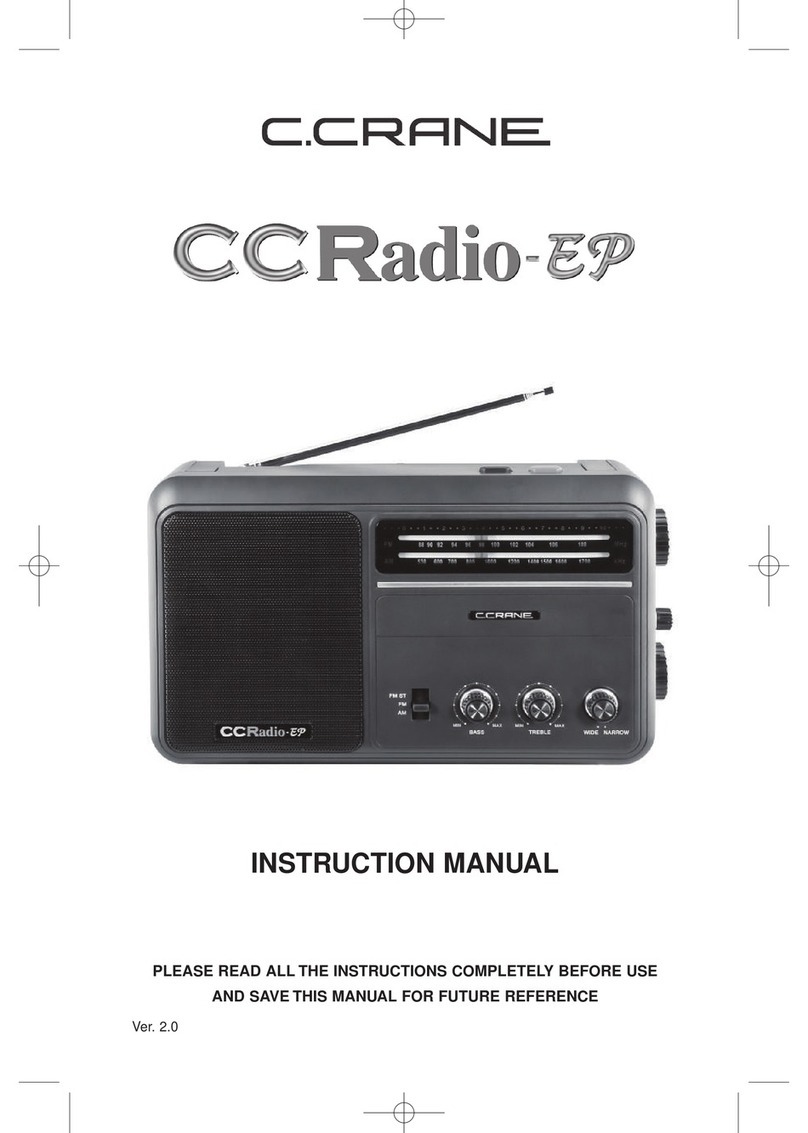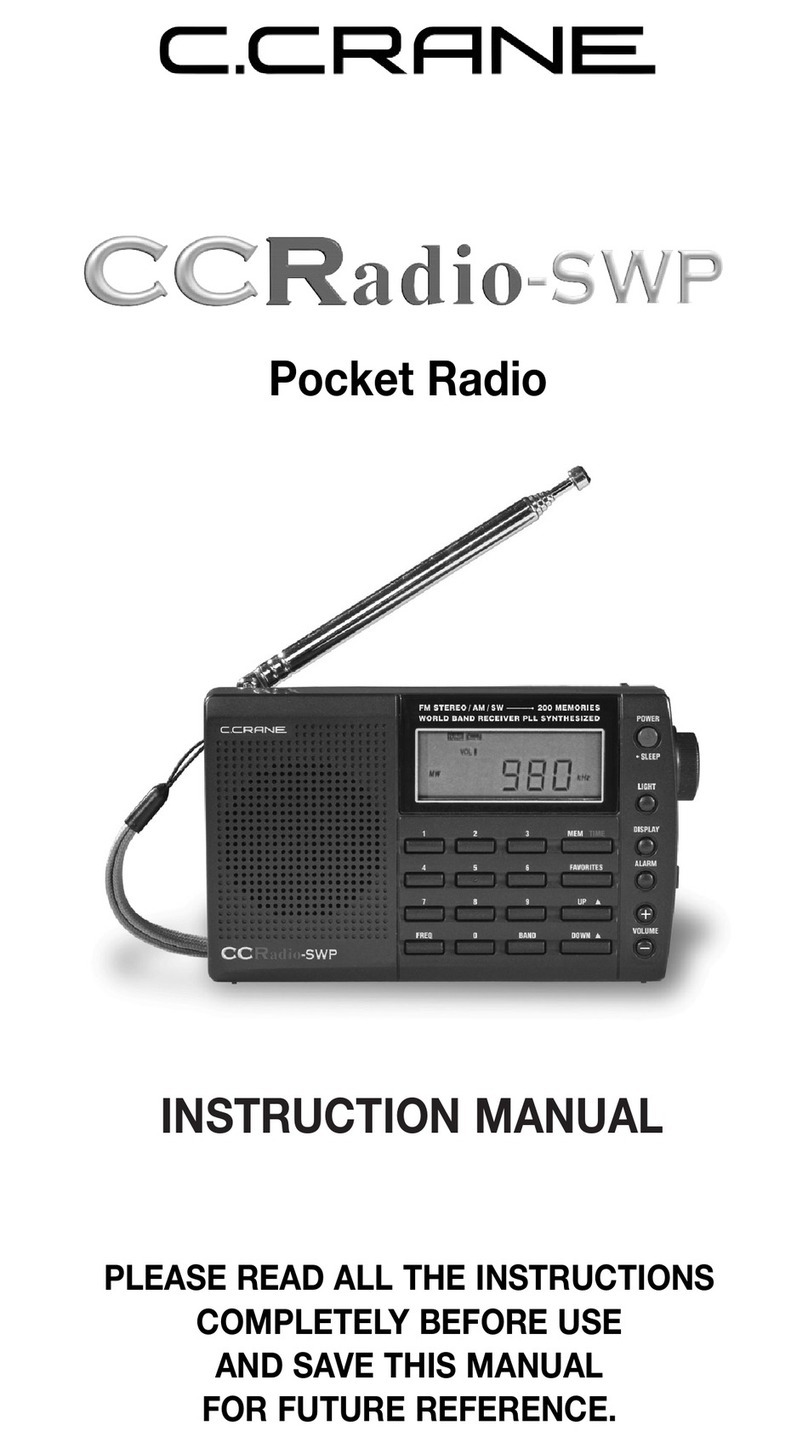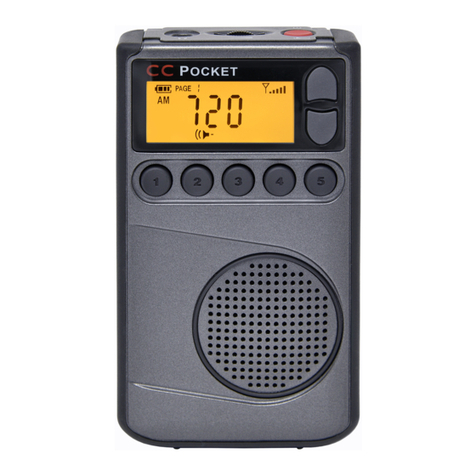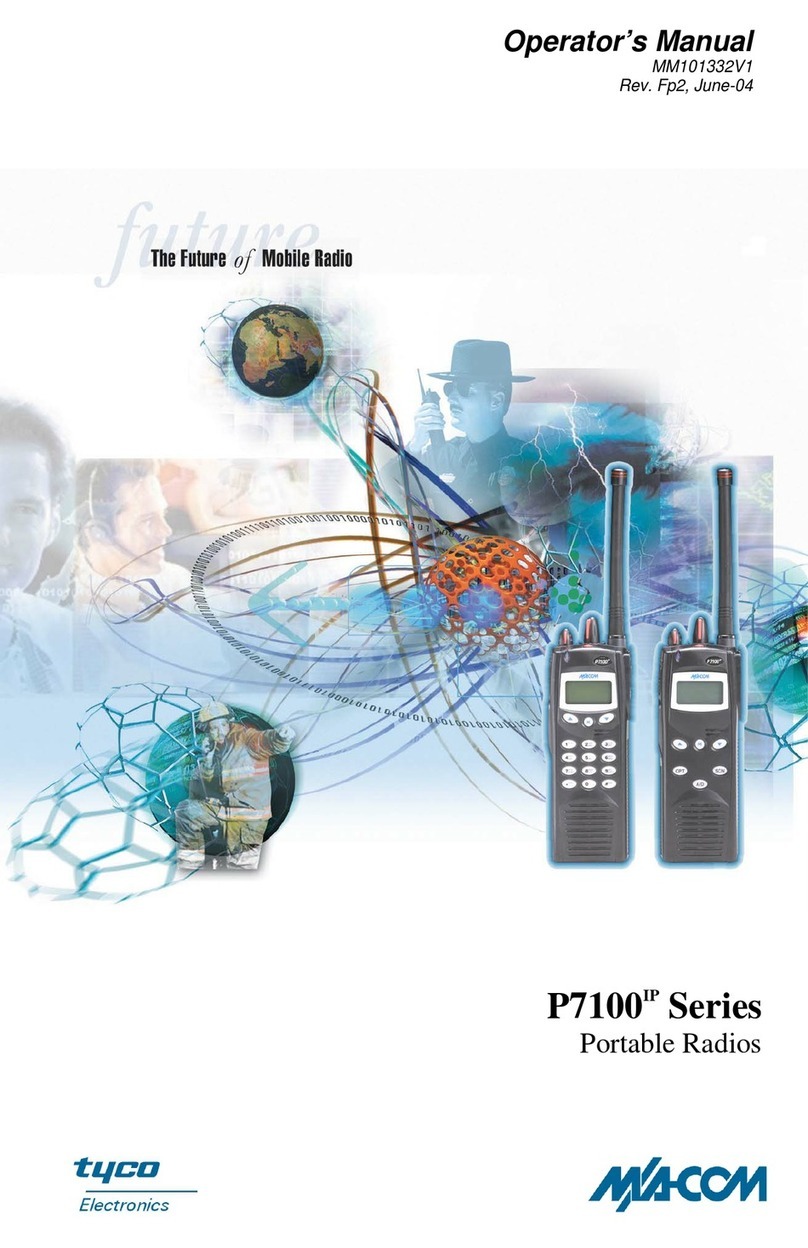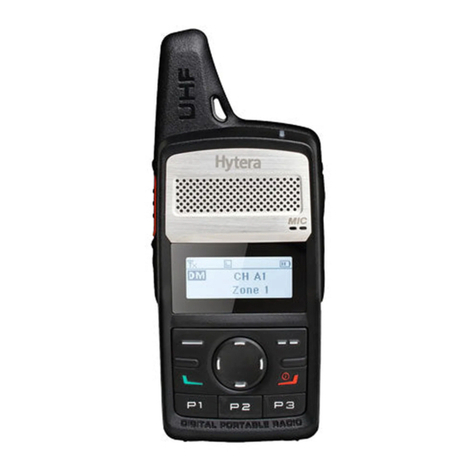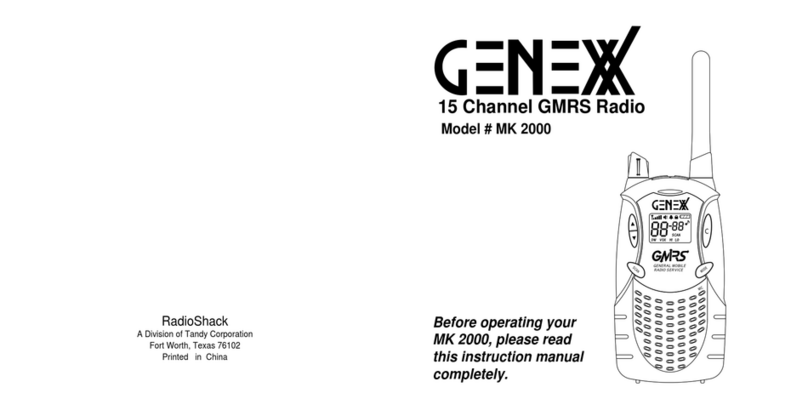CC SW Pocket Page 5
Table of Contents
Unpacking ............................................... 3
Quick Start ............................................... 4
Radio Identification ........................... 6-11
Features and Operation Explained
Introduction ............................ 12
Power Sleep Button ............... 12
Tuning Knob ........................... 13
Light ........................................ 14
Display Button ..................... 14
Setting the Alarm .................. 15
Up and Down Buttons ........... 16
Band Button .......................... 16
Frequency Button .................. 16
0-9 Keys ................................. 17
Setting Clock Time ................ 18
Saving Stations to Memory ... 18
Favorites ................................ 19
Performance Tips ........................... 19-20
Troubleshooting Guide .......................... 21
Specifications ......................................... 22
Power Adapter ...................................... 22
Safety Instructions ........................... 23-25
Shortwave Tips ................................. 26-27
Station Log ........................................ 28-31
